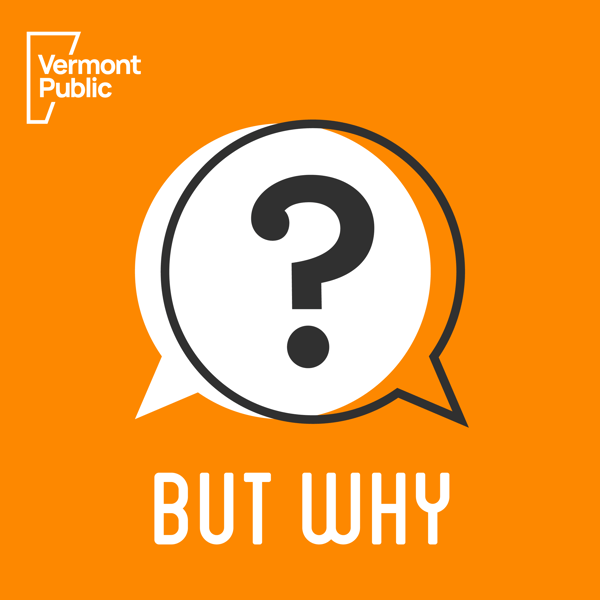How did people keep food cold in olden times?
But Why: A Podcast for Curious Kids
Vermont Public
4.4 • 4.9K Ratings
🗓️ 25 February 2022
⏱️ 26 minutes
🧾️ Download transcript
Summary
Violet, 5, wants to know: what was life like before refrigerators? And Ellinor, 6, asks: how did they make ice in the old times? In this episode, we learn about the history of ice harvesting and the industry that built up around it, where ice cut from lakes in New England was shipped to as far away as India and the Caribbean. We hear more about this history from Gavin Weightman, author of The Frozen Water Trade. And we visit Rockywold-Deephaven Camps in New Hampshire, where ice is still harvested each winter from Squam Lake and used to keep old fashioned ice boxes at the camp cool all summer long.
Download our learning guides: PDF | Google Slide | Transcript
Before refrigeration, people stored food in a lot of different ways. Food would be smoked, dried, salted, fermented or pickled. It would also be kept in root cellars or pits underground.
Wealthy people who lived in cold climates were more likely to have an ice pit or later an ice house where they would keep ice for use in warm months.
In the 1800s, a Massachusetts man named Frederic Tudor thought he could get wealthy by shipping ice to warmer climates. After trying and failing many times, he finally succeeded in convincing people that there was a market for ice and wound up shipping ice around the world, as far away as India. The ice was kept cold by insulating it with straw and sawdust and stored in warehouses until it was time to be used.
People cut ice from lakes using hand saws. Eventually they started using horse drawn machinery to cut ice, but it was still hard and dangerous work.
People in cities also became accustomed to ice as an everyday necessity, and eventually, naturally harvested ice was eventually replaced by ice made in factories. In cities, “ice men” would deliver ice to butchers and fishmongers, and to individual houses, where people would use them in their ice boxes.
Ice boxes were wooden or metal chests with a compartment in the top where a block of ice would be placed. Cold air falls and cools the food below it. Ice boxes needed more ice every day or two.
The electric refrigerator was invented in the early 1900s and became popular by 1940.
Resources
Transcript
Click on a timestamp to play from that location
| 0:00.0 | If you're on the hunt for the perfect holiday gift for the kids in your life this season, |
| 0:08.6 | don't forget, but why has books? |
| 0:11.0 | They're great for independent readers or for adults to read to younger kids. |
| 0:15.6 | So if you and your kids would like to know what animal can regenerate its limbs better |
| 0:20.6 | than almost any other animal in the world, or what jellyfish are actually made out of, |
| 0:26.2 | get your hands on Do Fish Breathe underwater. |
| 0:29.0 | Our book all about the ocean. |
| 0:31.2 | Maybe farm animals are more your kids' speed. |
| 0:33.5 | In that case, try our Lama's Ticklish. |
| 0:36.5 | You can find our books at your local bookstore or online, and you can learn more at butwhykids.org |
| 0:42.3 | or slash books. |
| 1:07.7 | This is But Why, a podcast for curious kids. |
| 1:10.9 | I'm Jane Lindhol. |
| 1:12.8 | We love exploring the world of ideas with you, and today we get to talk about history |
| 1:17.8 | and science and a historical tradition that's still alive and well in a few neat places. |
| 1:25.7 | For most of us these days, when we want a cold drink, we can probably reach into a refrigerator |
| 1:31.7 | we probably have inside our house and pull out a carton of milk or juice. |
| 1:37.4 | But electric refrigerators haven't been around all that long, and people have been keeping |
| 1:42.0 | their food and drinks cold for longer than there have been refrigerators. |
| 1:46.5 | How? |
| 1:47.5 | A few of you have asked us to help you get to the bottom of this, and that's what we're |
| 1:51.9 | going to do today. |
... |
Please login to see the full transcript.
Disclaimer: The podcast and artwork embedded on this page are from Vermont Public, and are the property of its owner and not affiliated with or endorsed by Tapesearch.
Generated transcripts are the property of Vermont Public and are distributed freely under the Fair Use doctrine. Transcripts generated by Tapesearch are not guaranteed to be accurate.
Copyright © Tapesearch 2025.

